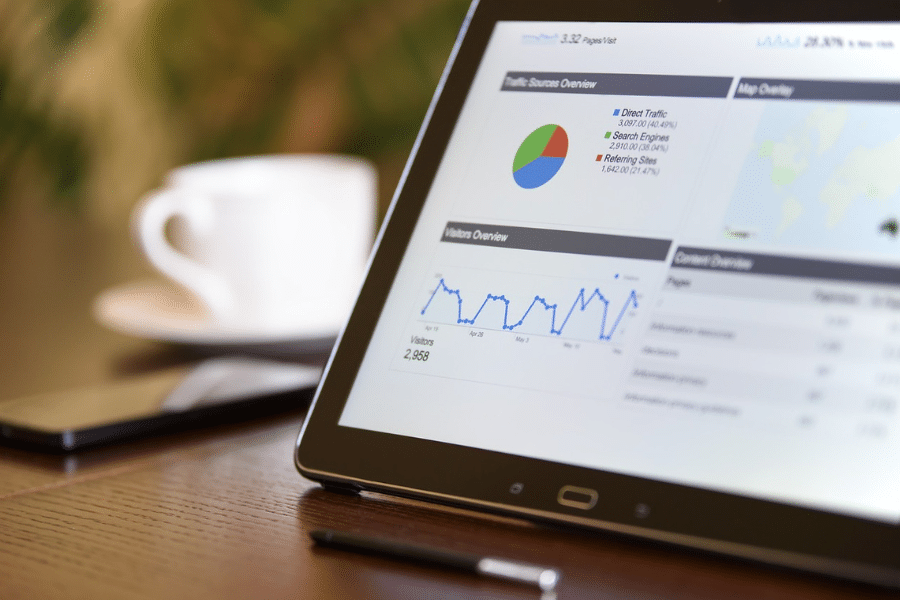Proxies can be classified based on different criteria. However, all proxies work on the same principle and residential and datacenter proxies are not any different. Both types of proxies forward user requests through a proxy server before hitting the target server. Yet, depending on specific use cases one proxy type may be much more ideal than the other. With that in mind, let’s compare residential vs. datacenter proxies for Instagram.
In the Instagram realm, choosing between residential and datacenter proxies is crucial. Therefore, it is important to weigh both proxy types to grasp their differences, benefits as well as flaws. To help you make the right choice, I invite you to stick with me to the end of this article.
Residential Proxies
Table of Contents
ToggleA residential proxy is a proxy server that uses IP addresses of real internet devices rather than data centers. Just like any other type of proxy, residential proxies act as a middleman between the user’s device and Instagram. However, residential proxies are IP addresses assigned by ISPs like Verizon or T-Mobile to internet devices owned by homeowners.
To create residential proxies, providers lease IPs from Internet Service Providers (ISPs) or through peer-to-peer programs. These IPs are then sold to proxy users to mask their real IP addresses. One thing to note is that residential proxies do a better job of keeping users anonymous. This is because they exhibit real organic human behavior as a result of being tied to physical addresses.
Pros and Cons of Residential Proxies for Instagram
Each proxy type has its perks and in a way, disadvantages. However, what may be a disadvantage for one user or use case may be less of a concern to another. With that said, let’s look at the pros and cons of residential proxies for Instagram.
Pro – Authentic and Trustworthy
Residential proxies are essentially real IP addresses linked to physical end users and devices. This makes them far more authentic compared to the competition. They allow user requests routed through them to appear as organic traffic from real humans. Due to this web service providers trust requests sent through them and usually subject them to less scrutiny.
Even though simulating organic traffic is important in every proxy use case, it is even more important when it comes to Instagram. This is because Instagram is always on the lookout to spot and ban proxy IP addresses from accessing their network.
Pro – Higher Anonymity
Residential proxies do a very good job when it comes to keeping users anonymous. Unlike datacenter proxies that stem from data centers, residential proxies are IPs leased from ISPs and end users. Hence, the proxy user assumes the ‘identity’ of the real IP owner and keeps their true IP hidden.
In the Instagram environment, this allows users to make use of proxies while still maintaining a human persona. With this, users with blocked IPs can easily get back to their accounts with residential proxies. However, it is worth noting that even with the best residential proxy, misconfiguring your proxies could give you off.
Pro – Better Geotargeting
Residential proxies allow users to target any location of their choice provided internet access is available in that geolocation. This gives them an edge when it comes to geo-targeting. Residential proxies allow users to target countries, states and even cities as they are generated from devices all over the world.
As a digital marketer, this will allow you to monitor competitors in other regions to enhance your ad campaigns on Instagram. Even more, residential proxies make it possible for users to access geo-restricted content from restricted zones. This can come in handy if you need to verify ads on Instagram in different regions.
Con – Slow Speed and Low Uptime
Residential proxies depend on user devices like computers, mobile phones, etc. rather than high-performing servers as in the case of their datacenter counterpart. This makes them usually slow especially when the user targets a location that is very far from their actual location. Residential IPs generated through p2p programs can also be unreliable due to low uptimes. However, this con can usually be solved by buying from reputable providers.
Con – Expensive
If you’ve ever purchased residential proxies, you would agree that they are always priced higher than datacenter proxies. This is because residential proxies require a more complex network infrastructure to work. Proxy providers pay huge sums of money to lease these IPs from ISPs or end users hence, the huge price tag. This makes them quite a turn-off for users handling limited-budget projects.
Datacenter Proxies
Datacenter proxies are the most common type of proxy on the market today. In fact, datacenter proxies are often used to explain how proxies work due to how common they are. This is mostly due to how easy they are to generate and the cost factor.
A datacenter proxy as the name suggests is a proxy server that makes use of IPs originating from a data center. Unlike their residential counterpart, datacenter proxies route user requests through IPs that are registered to data centers rather than an ISP.
Pros and Cons of Datacenter Proxies for Instagram
Just like residential proxies, datacenter proxies have their own fair share of the cake when it comes to pros and cons. Let’s take a look at some of them and how they can affect your Instagram project.
Pro – Cheap
One of the main advantages of datacenter proxies has to do with its pricing. Unlike residential proxies do not require the involvement of an ISP or leasing real IPs. This makes them very affordable and ideal for small and tight-budget projects.
What’s more, instead of a restriction on bandwidth, datacenter proxies usually come with a limit on concurrent threads. Therefore, users can save on cost by purchasing the exact number of IPs they require rather than paying for extra GBs as in the case of residential proxies.
Pro – Readily Available
Datacenter proxies do not require a lot of infrastructure to set up like residential proxies. While a residential proxy requires user devices or an ISP, datacenter proxies require only a data center server to route requests. This is evidenced by the sheer number of datacenter proxy providers in the market today.
This makes them readily available to users looking to expand their reach on Instagram. What’s more [find another phrase for what’s more] their availability coupled with their cheap nature also makes them very scalable.
Pro – Higher Speed and Uptime
Some poor providers may offer sluggish datacenter proxies, however, datacenter proxies are usually faster than their residential counterparts. This is because they are hosted on high-performing servers in various data centers rather than a personal computer somewhere. This guarantees higher speeds and uptimes as compared to routing requests through user devices.
Proxy speed is less of a concern on Instagram and very fast proxies could be easily detected. However, higher uptimes ensure that the proxy IPs are always available and online to ensure a seamless connection to Instagram.
Con – Easily Detected
Instagram spends millions to prevent proxy users from accessing their network and guess who is first on the chopping board. What makes datacenter proxies great in other aspects makes them less than ideal for Instagram in other areas. Datacenter proxies are registered to the data centers they are generated from rather than ISPs making them easily detectable. Users therefore risk not only their IPs but to some extent their accounts as well.
Con – Limited Geolocations
Datacenter proxies also offer limited locations which can be a disadvantage if you are looking to target multiple locations. While datacenter proxies offer some level of geotargeting, they are limited to the location of the data center only. This may not affect every Instagram proxy user. However, Instagram use cases like ad verification and market research may require users to simulate other geolocations.
Conclusion
Selecting the best Instagram proxy depends on the project, requirements and priorities. While datacenter proxies offer users seamless connection, speed and better uptimes, they are easy to detect. Residential proxies on the hand offer the same authenticity as your real IP address since they are sourced from real users. They also allow users to target IPs from locations across the globe. However, residential proxies can be quite expensive for individuals and small-budget projects.
While comparing residential vs. datacenter proxies can help you choose the best proxy for Instagram, buying proxies from the wrong provider will be counter-intuitive. That being said, if you are in the market for Instagram proxies then you are in luck. Kocerroxy offers users IPs optimized and compatible with Instagram. Still in doubt? You are welcome to try our premium residential and datacenter proxies for just $2.
How useful was this post?
Click on a star to rate it!
Average rating 0 / 5. Vote count: 0
No votes so far! Be the first to rate this post.
We are sorry that this post was not useful for you!
Let us improve this post!
Tell us how we can improve this post?


